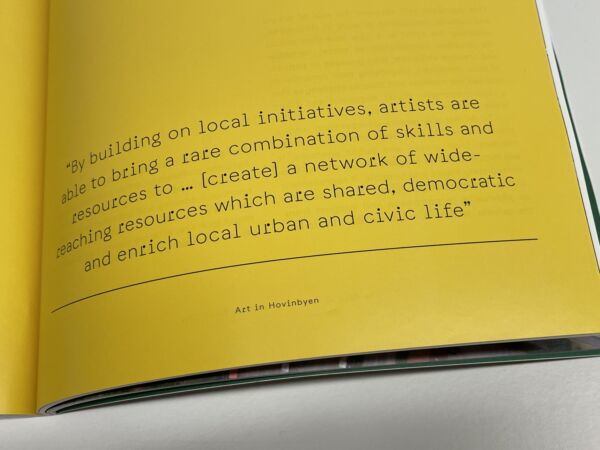Art in Hovinbyen - Interview with James Binning
James Binning is a founding member of the design-led interdisciplinary practice Assemble where he has worked on a range of projects, from the design and fabrication of furniture and installation-scale projects, to the orchestration of large-scale collective build projects and the design of public spaces and buildings in the UK and abroad.
- Kategori
- Intervju
- Publisert
Text: André Gali
Assemble was founded in 2010 to undertake a single self-built project, and has since delivered a diverse and award-winning body of works whilst retaining a democratic and co-operative working method. They design but also develop and sometimes build projects alongside social and research-based work at a variety of scales. They try both to make things, and to make things happen. As a multi-disciplinary collective working across architecture, design and art in 2019 Assemble were invited to Oslo to consult on the art and city development project in Hovinbyen. The outcome was the report “Art in Hovinbyen” that proposed a framework for art production and co-authorship of projects where communities would play a role as partners and collaborators in a range of art projects aimed at enriching public space and urban life.
James Binning will present the Art in Hovinbyen-project at a lecture during the seminar “Kunst i by og nabolagsutvikling”, Friday 14 October 2022, at Økern.
The following interview was done on Zoom Wednesday 5th of October 2022.
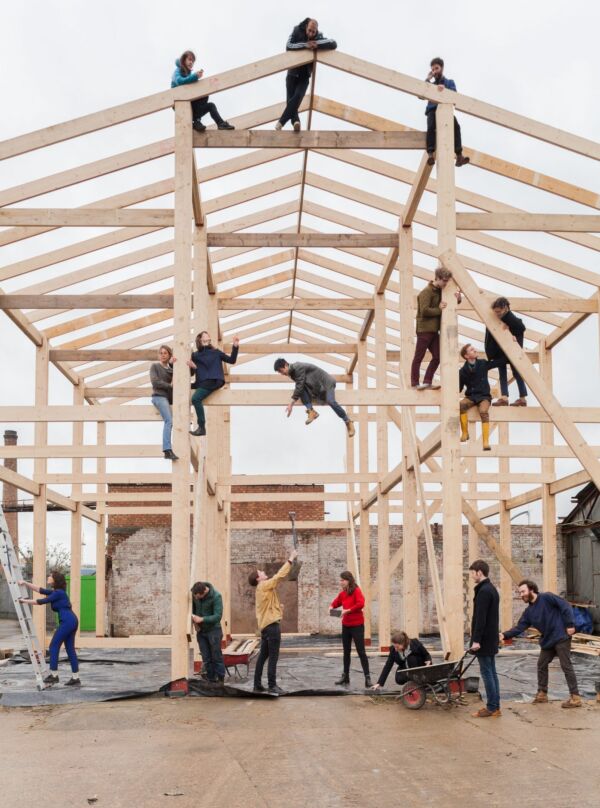

– Can you tell me how Assemble started and about the initial projects you developed?
– We started working as Assemble in 2009. We were a group of friends that studied together, mostly architecture, but also other kind of arts or humanities courses as well. Having finished our undergraduate studies in 2009, it wasn't a very optimistic situation, entering work in the wake of the global financial crisis and so on. And the kinds of opportunities and projects we were finding ourselves engaged in at the start of our professional lives then felt very different from the kind of idealistic and ambitious social and political agendas that we were taught to believe that architecture might act in support of.
So that reality had bit pretty hard, it was quite a difficult environment. But there were others that were coming together, doing projects with limited means and in a very direct, hands on way at the same time that seemed to both allow a different kind of work and a more immediate and exciting way of exercising our skills. Seeing these other projects, people like Practice Architecture in UK or EXYST, who are a French collective but who were working on a project in London, we came together to try to do a project, one where we could be very involved in all aspects of it. From the design, which is the part that we were familiar with from our studies…but also the the production, from raising the budget, to doing all the construction, managing of the costs, organising the publicity and putting on events, and at the end of a 6-week build on a very visible site, an old out of use petrol station in the middle of the city, we put on a series of film screenings – the whole thing was done very cheaply, for around £5000 so we were able to keep the costs people had to pay to come and be a part of it very low, too.
And I think from that it was just such a different experience and process to other projects that we were working as very junior staff in architecture offices, a very different responsibility and intensity and speed. And at the same time it felt like a kind of continuation of our education in some respects, being able to work in an experimental quite open-ended way, and without a single author instructing everyone else what to do and how to do it – which contributed to it feeling like a properly collective effort, although actually the design, the project, has a very coherent and strong identity in spite of having a lot of people work on it with a lot of autonomy, which comes down to having a very clear vision and quite a simple set of materials and processes available to us. Fundamentally we had a really good time and we thought about doing something again, another project, another site.
The second project was underneath a motorway flyover, like the petrol station an overlooked piece of public space that had some distinctive, dramatic qualities and which we could make use of because those kinds of places don’t have an obvious commercial value – no one else was queuing up to do anything there. So these felt like very good opportunities to be able to build something quite economical and unusual and invite people into them and to experience these spaces in a different way.
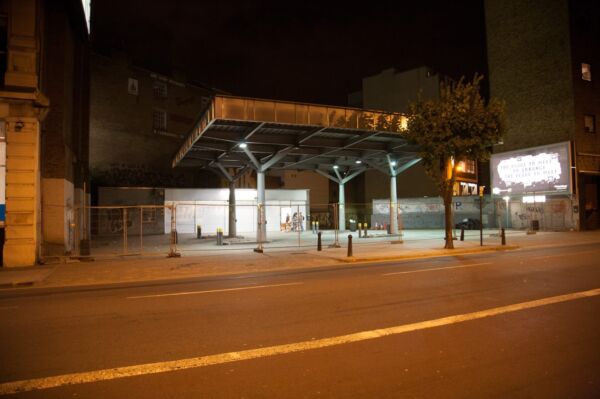
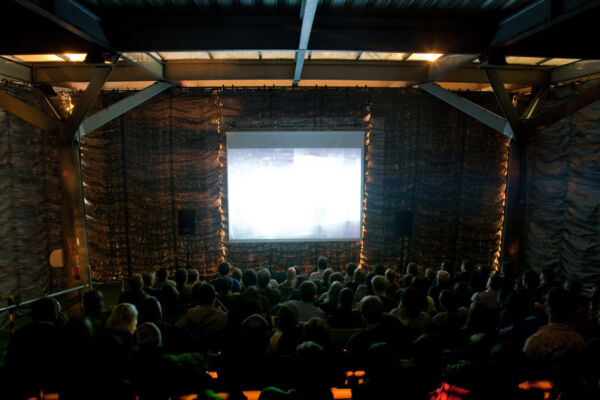
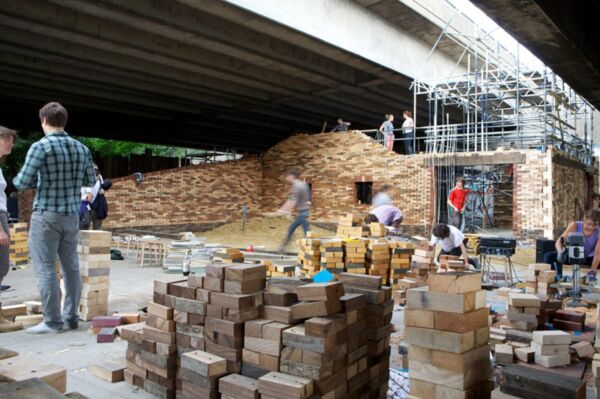
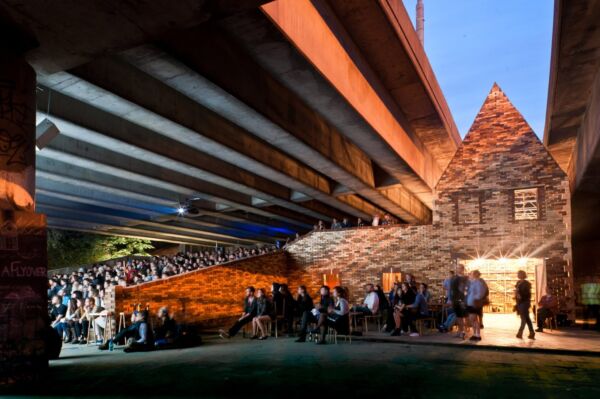
– This sounds like an exciting and productive way to go about the situation. To find places like that. Would you say that you could escape more traditional ways of thinking and working as architects within the city?
– I think we were just interested in thinking about how through building something quite strange and unexpected you could really transform these kinds of spaces that were closed off and marginal into places that had a very lively and active life. It was obviously only for a short time. Although it was also at this point just an opportunity for us to experience the thrill of being involved in making something building scale – there was a lot of difficulty, tension and ultimately joy in doing these projects, getting them built, getting them open, seeing them have this life once we’d built them.
They felt like they had a value, too, putting on events and running activities that drew quite an unusual mix of people from across the city as well as within communities around those places. And from there, really, I think a bit more clarity emerged about how we wanted to work going forward.
Part of that was about being positive, not seeing design or architecture as about problem-solving but just improving, enabling people to see familiar things in a different way, to be included in ways which aren’t always common in the city. It was significant that they weren’t commercial projects and we weren’t a professional team. Somewhere there’s a book with all the names of the people that took part in the building of the projects, lots of whom came for a day or two, heard about it and turned up or just walked past and asked what was going on, and that enabled those projects to much more open and inviting, present themselves much more informally than more official or commercial or even explicitly participatory projects that always, ultimately, have someone who gets to decide what it’s about. While there was a clear vision, in general people’s agency and ability to shape the project whether in the construction phase or in terms of programming or events was proportionate to the level of involvement and energy and time that went in – in that respect it was genuinely pretty open and operated as a partnership between lots of different people without much formal agreement, expectation or constraint on what could or couldn’t happen there.
So that's how it sort of began - with these initially temporary projects. And over time, I think there's been an effort to try to do projects which may start with small amounts of investments or make use of an initial short-term opportunity but with a view to building up incrementally. Those projects, maybe more in spirit or principle rather than as concrete examples, feel like a way of demonstrating an approach that directly informed the next generation of projects we did, like a public-access Workshop in North London called Blackhorse Workshop and the redesign of a town square in South London, in New Addington, where we built a full scale prototype of all the design changes as a way of testing which parts made a tangible difference to how the square was used.
So while now we also do more conventional design projects where we work with a client, get a brief and we respond to that and the output is typically the design of a building I think we're still interested in ways in which buildings are just one way, often a very expensive and slow way and very capital intensive way, of trying to make the built environment better and more equitable.
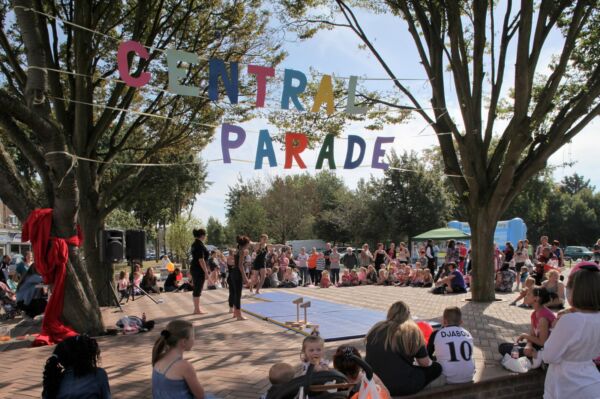

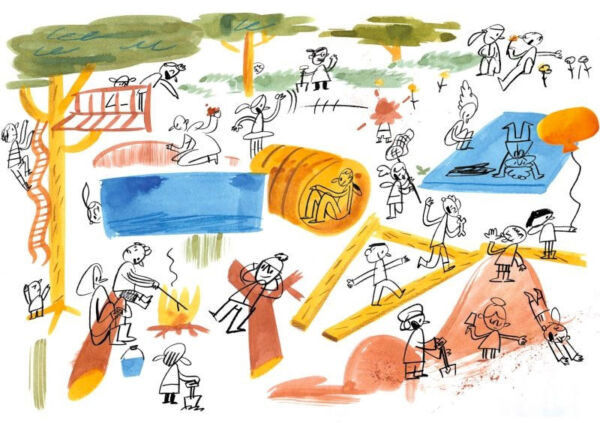
– I guess many people, like myself, first and foremost know Assemble through the Turner Prize Award, which you won in 2015. So, I guess many people assume, and that has been my impression as well, that you somehow is primarily connected to an art discourse, that you work with architecture from the perspective of artists. How to you considered those categories?
– Well, in a way, I didn't qualify professionally as an architect – in the strict legal sense I'm not an Architect, but my practice and I think our practice broadly is architectural. While I wouldn't say that I'm a practicing artist either the fact that we started out at a young stage working in a way that was very hands-on, often involved us driving vans, or doing carpentry or welding as well as preparing drawings, models, running consultations and so on has meant we have been able to be relatively liberal with how we describe what we do, what our roles are. The title, the identity hasn’t been very important to us perhaps except in the sense that we’ve not been faced with many preconceptions about how we will work, or engage with people or their ideas, and that has mostly been very useful.
I think we're interested in the city – that is both the physical fabric and space, the built environment, but also what happens in and around it, its culture and use. I don't think we're that interested in whether it's architecture or whether sometimes it's art or sometimes whether it's social practice or whatever it is - it's all a form of practice, different tools you can adopt and use in different situations. That ambiguity can be useful to us because it means that we are able sometimes to work in ways which don't require us to design or propose a building - we have a greater license as a result of that freedom that is often associated and expected by people that practice art, where autonomy is seen as really sacrosanct. Ultimately though I think we were awarded the Turner Prize because what we were doing was considered to be useful as well as a form of art practice. It’s an award which is intended to challenge and stimulate debate about the role of art in society. So to nominate a group of people bringing resourcefulness and skill, working in collaboration alongside an extraordinary community group in Liverpool to realise beautiful, affordable homes in really difficult circumstances and in the face of a lot of political opposition was pretty compelling. It made a strong case for art being not only about rarefied works in galleries but as a part of the everyday, contributing to challenging issues like the quality and provision of affordable housing, which has been right at the top of the public agenda in the UK for decades.
I don’t think it really matters whether it's art or not – maybe that might upset some artists. I don’t think we find it very interesting to think about that particularly in relation to our role. I think we've always been relatively pragmatic about the fact that the thing that we're interested in doing is finding ways of getting the money and people together to enable us to do projects that we think would improve situations on terms of the people that we are working with in any particular context. We use a variety of different tools, skills, capacities, methods across different projects, and depending to a great extent on who is working on what.
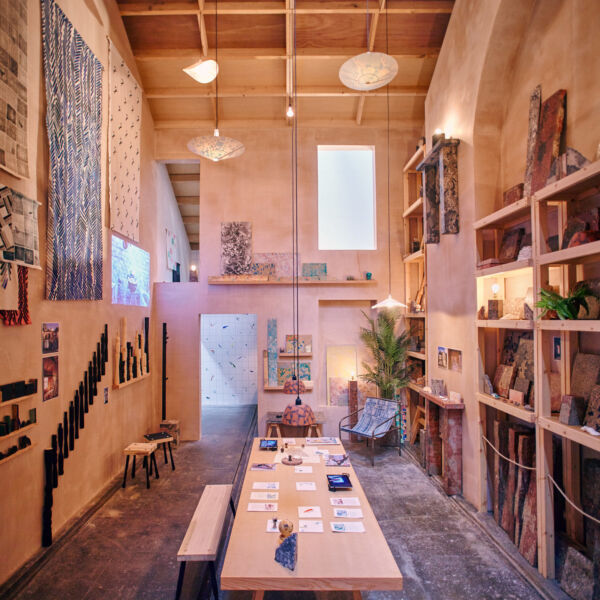

– Do you all work on the same project as a collective, or do you split up in smaller groups?
– Initially, we basically worked on the same projects. As we got more projects, we worked on those projects in smaller groups. And then for the last few years it's been more the case that generally two or three people will work on a project and work on multiple projects at the same time.
It was the same group of people, really, for the first six or seven years. That's begun to change. Some people have left to do other things and some new people have joined the group. So it’s in a moment where I think now things are changing a little bit in terms of how we're organized and also the nature of the work that we're doing. I think maybe in some ways we're entering a kind of mature phase where there's a little bit more work which is probably recognizably and conventionally understood in architecture, but I think it’s quite open how the influence of new, younger members will change things.
I think the reason the project in Hovinbyen was very interesting was because it was the first time we've been asked to think about how we create the conditions for other people to make projects as opposed to us sort of making, taking advantage or co-opting opportunities. Often we would respond to briefs that called for one kind of project and we would try to reposition the focus a bit, demonstrate a different need or a greater opportunity that the resources available could be directed towards. Projects like Blackhorse Workshop, or the playground in Baltic Street in Glasgow, or Granby Workshop in Liverpool were examples of those kinds of projects.
The Art in Hovinbyen project was the first time really we were able to say that the most important thing is not the autonomy of the artist, and that this process is about commissioning them to make a work that might have some indirect and intangible benefit – it’s that the projects are used to commission artist-led projects that are genuine partnerships with communities and groups, and that involve a broad audience in the production of work as partners and not just participants. That it is not only the artist, or the commissioner, that has the power to decide or to arbitrate what public art looks like and should be. A part of that is also about recognising the value in art as a part of people’s everyday experience and that widening access through projects or programmes to forms of cultural or artistic production, which for most people ends at school, could have a greater impact than funding projects led by artists where, at best, people were invited to participate in the production of an artists work.
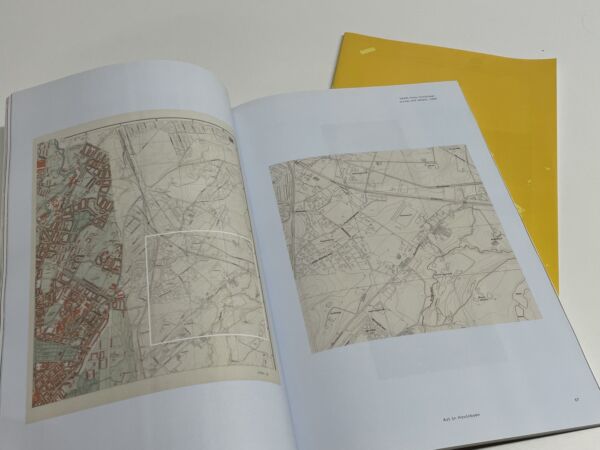
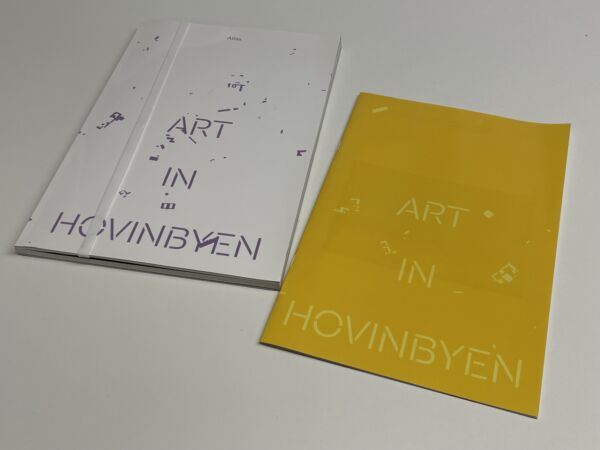
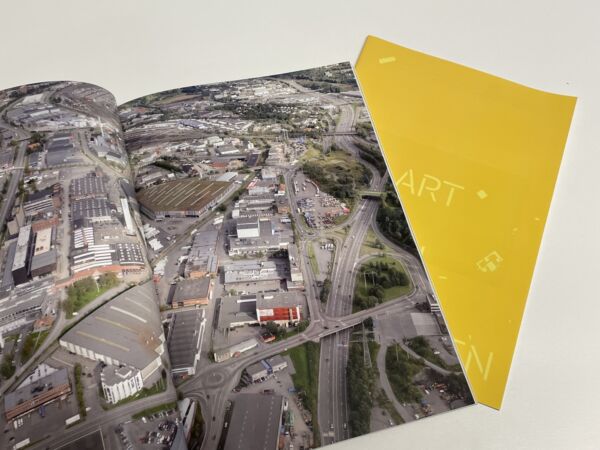
– So, did you see Art in Hovinbyen as more of a way to think about funding structures?
– I think this was the first time we were able to stay in a project and try to structure as an argument that public money for artistic creation shouldn't be about funding artists to make work. It should be about funding the infrastructure and creating the situations in which fundamentally there is a wider opportunity to be involved in more varied forms of cultural artistic production.
For us, basically, a child on an adventure playground making a den is as powerful and significant as a celebrated artist making a beautiful sculpture. They might have a different economic value – I’m not saying they are the same, and should be valued the same way economically. But intrinsically, I don’t think one has a greater value than the other – they are both acts of creativity, care, thoughtful and unexpected work and both have value. And, actually you can fund an awful lot more playgrounds that enable that experience, you can demonstrate quantitatively the social impact and the environmental impact and the economic impact of that investment in that playground, too - far more than the tenuous claims that you're able to make about the public good that funding, I guess, traditional forms of public art have on people’s sense of wellbeing. On the other hand, you can definitely make some concrete assertions about the commercial value that investment in art in public space, like sculpture or an unusual series of benches or whatever, generate. But that shouldn’t be the role of public art programming – because at a very basic level, the people that benefit from that economic value that is generated aren’t generally the public.
I think it's a tremendously powerful and exciting idea that art practice, the skills and tools of artists whether those are technical or social, in a broad sense can be very effective at addressing all kinds of social issues that conventional tools and institutions are increasingly unable to address - like mental health, social isolation, poor access to good spaces for play in urban environments, all of these kinds of contemporary issues that afflict modern societies.
But you have to move away, I think, from the idea that it's about the artists having autonomy and that, at best, other people get to participate. That can be brilliant – it also isn’t a binary ‘all that kind of work is bad’. But there are plenty of other organisations that can support these kinds of projects, whereas the role of a public art agency or the city is quite unique, and the focus of this commission was about art and its role in urban situations that are undergoing rapid change. And if we instead see communities, local groups and so on as equal partners in making projects with artists that utilise and deploy the tools of art practice to try to address kind of the needs that exist in these places, then the kinds of things that can happen can be culturally and imaginatively extremely rich as well as impactful.
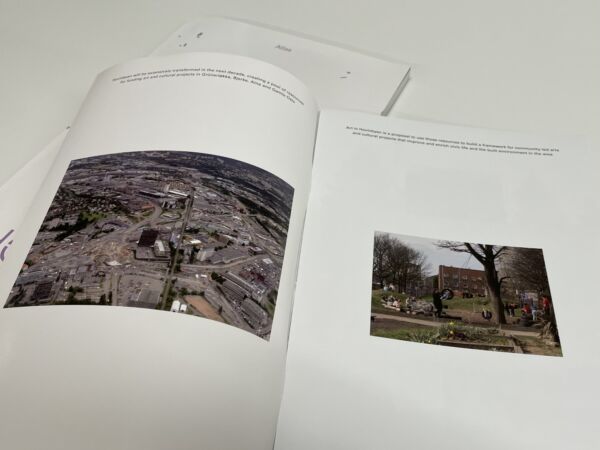
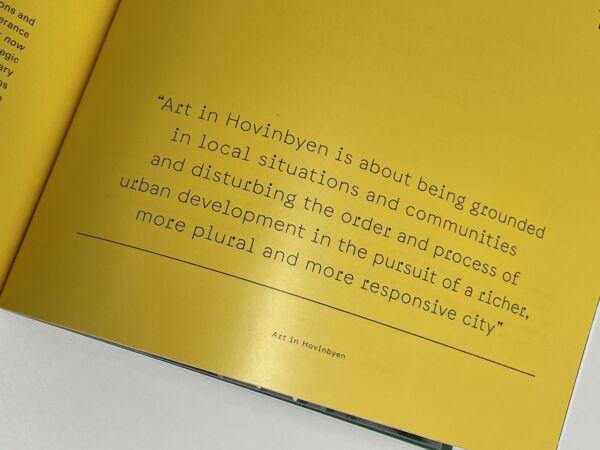
– How did you experience working with the Art in Hovinbyen-project?
– It was very challenging, I think, because it's a very big area of the city and it's one that is changing very fast. There are lots of different competing priorities, I think that was the sense we got from different people we spoke to and that these were not always aligned. That isn’t a big surprise when you are speaking about diverse public and private interests.
A big aspect of the project was just trying to understand, not in really specific terms, because I don't think it's our role, that there are these opportunities to look at the situation and value certain things about the context, or communities, or what is already going on there in a different way. To raise and elevate the opportunity around certain things that no-one else seemed to be talking about – mostly because a lot of the time people look at this kind of place, which is not economically valuable relative to other parts of the city, and miss the things that have a different kind of value that exist and which make it specific and interesting.
To make the kinds of projects we were trying to make a framework for, we tried to emphasise the importance of enlisting or trusting people that live and work or have a relationship to these places to shape more specific briefs or stake out what the aims were in more detail. And I think the difficulty with that is it's one thing to sort of sit and say we want to make really good community art projects. It's a very different thing to say I'm prepared and ready to bring that person into the room and treat them and what they say with as much importance as the opinion of anybody else in this room, the professionals and experts who have paid roles, and to recognize all the things that are necessary to enable that to happen in a meaningful way. You need to pay them for their time, think about what time meetings happen, all of this other stuff that makes it practically complicated within existing modes in which projects are developed and delivered. And there's always a tension there, which is that somebody else has a job and their job might be to decide what good art looks like. Loosening the grip and giving away, or sharing, that responsibility and power isn’t an easy thing to get to happen and I think we underestimated the extent to which that process of change was much more what would determine the outcomes than the basic idea and principles that we were trying to communicate.
It's quite undermining potentially to say, well yeah, that is one of your roles, but perhaps in this situation your role needs to change. That’s something that we've always been very comfortable with because we've never had really defined roles in our work, we have a relatively unhierarchical structure which means we aren’t accountable to someone higher up, and we’ve also been lucky to have success that gives us some confidence in what we are doing. But perhaps we didn’t have enough understanding that these aren’t things that are common, and weren’t careful and considerate enough of how what we were suggesting would be, practically speaking, a real and legitimate challenge.
Our role in the project is relatively small really, I think that was a realisation. We come in and we write this document and we share some ideas that we think are critical, urgent, can make a real difference in terms of how public art might be funded and structured and delivered and, genuinely, which I think would have a tremendous impact on the richness and diversity of public life in this part of the city potentially. But it's not our job to carry it through - that falls back to a group of people who are going to have to work on these things for years once we're gone, who work in roles and within organisational structures that are really well-defined and, actually, work pretty well already. So I think, actually, that was the single biggest learning from the project – the work and support, and also time, to gradually get from commissioning and supporting one kind of public art project to the kinds of projects we think are potentially the most interesting and impactful.
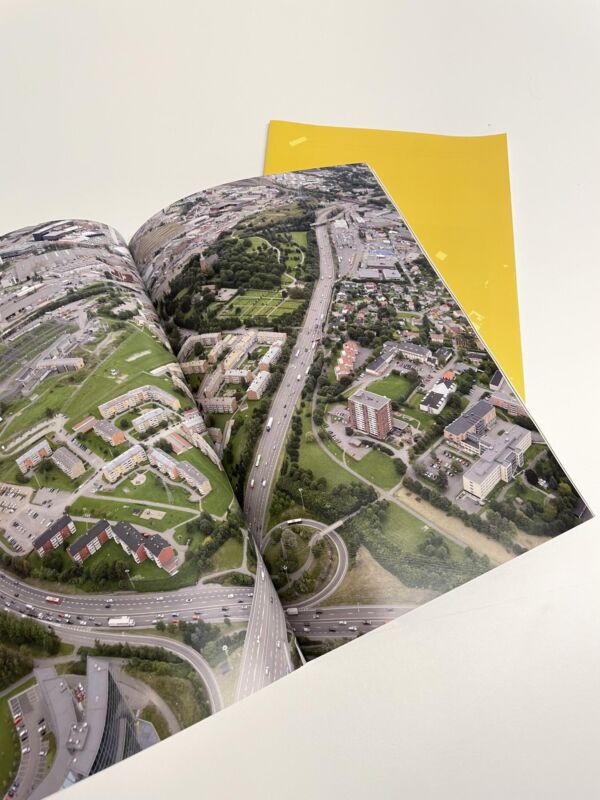
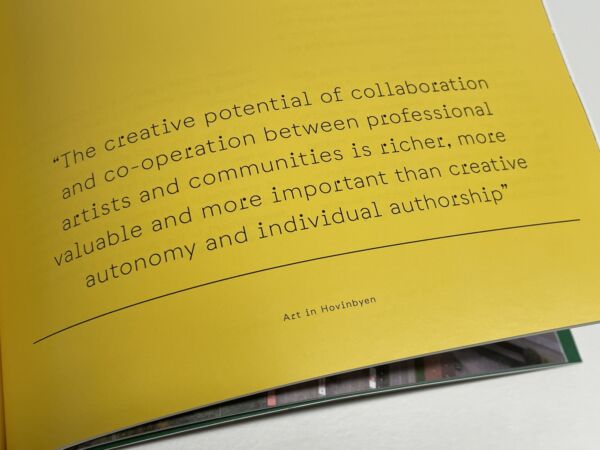
– Do you think art can play a significant part in city development, and if yes, do you have concrete examples to share with us?
– I think, certainly around London and other major cities, it is very well understood that art is a very effective tool in the marketing of public space and the creation of strong urban identities in a context where public and private spaces are basically in competition with one another for customers, tenants, wealth. Art in these situations as a means of creating a unique or distinct experience obviously does play a significant role, and has clear economic value. The conversations that we were having with the developers in the area went very much like “What is this thing going to look like?”, the interest is primarily visual - what's the value of it in terms of its ability to attract people to the neighbourhood and to change their perceptions about what this neighbourhood is like?
There is the idea that art in public space can be a way of making a place stand out - that by having good public art, you can make a place feel particular. It’s a very limited view.
The way that we want to talk about it and the way which to us feels most productive is to kind of see it as infrastructure. If you use the money – let’s call it investment, because that is what I think it is - to establish cultural infrastructure which can take on various forms, but essentially spaces of production, education, recreation, play, then that can enable all kinds of diverse activity to continue to happen in the longer term which are really important and material. In our own projects the public workshop in North London and the playground in Glasgow, these are things which were set up with very little money in which five or six or seven or eight years later have regular communities of people that go in and use them, that have shaped those organisations, the spaces have grown and evolved, what started out as a space for making or for play has become much more complex, where they both cater to a much wider range of different local needs.
The community of people around those projects is constantly changing and growing, adding more things to what they provide. They aren’t centralized, paternalistic institutions. It's an open access facility that other people, like a piece of computer code, say, can build on and use for developing – a business or an educational course or a product, or just for doing their own stuff. And the playground is quite similar. Instead of building like a slide, a tunnel and a swing, which can only ever be used as a slide, tunnel or a swing, it was about providing tools and materials that those kids can make and remake the environment the whole time. They are both very simple in terms of the physical spaces and resources, but the organisations are more complex and precisely what they do, at any point in time, is really a reflection of what the people that use or work there feel they should be doing.
What we were trying to do in Hovinbyen was to publicly support artists to work with communities on issues that affect them and to make projects which would make a material difference to people's experience of the city. The basic idea is that we should be using the available resources to enable communities to work in partnership and not simply as participants or as audience to the work of artists, whose specific and unique skills within our societies equip them to approach all manner of challenging issues in remarkably resourceful, rich and intelligent ways.
The spaces and support that is needed for these kinds of partnership can often be small, and might be quite scrappy – but in our experience the ability of these kinds of projects to transform and enrich urban life is far greater, more varied and more impactful than the kinds of public art we more often see.
